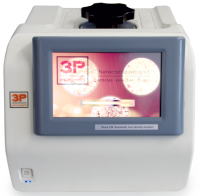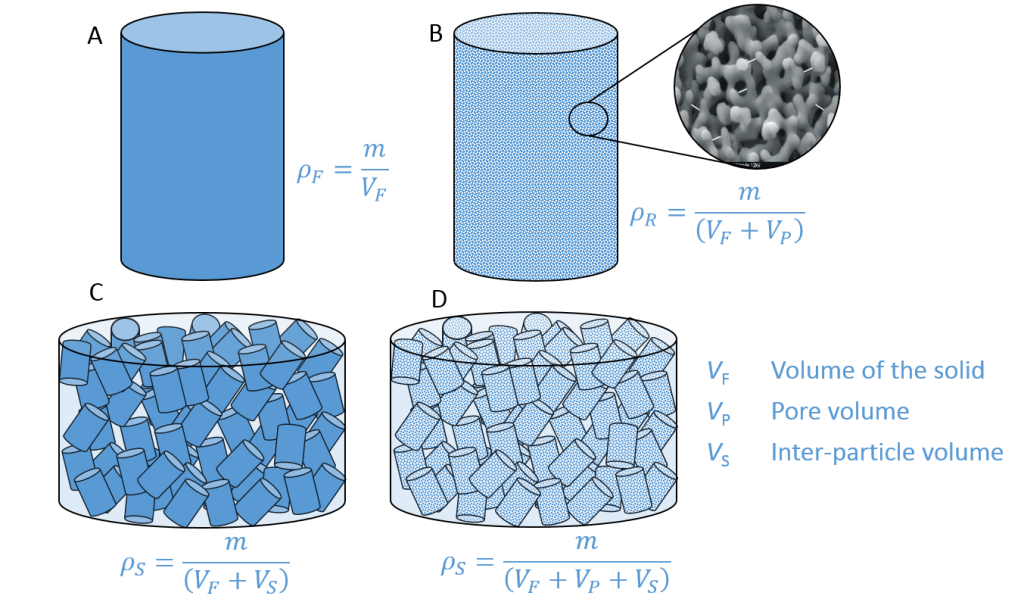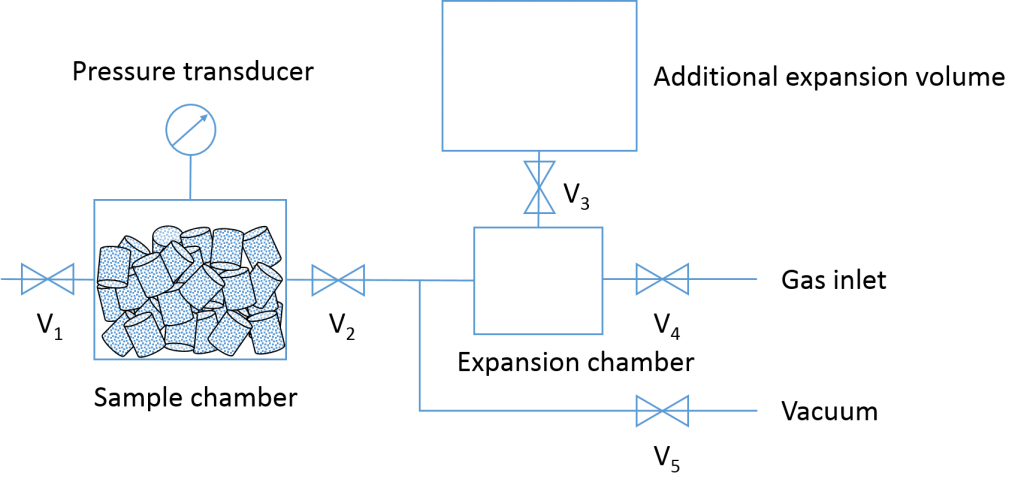Determination of density by means of gas pycnometry
In general terms density is defined as the quotient from mass by volume. Mass can be determined with ease by a scale. The determination of volume is more challenging, usually due to samples having irregular shapes or being powders of varying degree. Additionally, it needs to be noted that volume, and thus density, may be defined differently if pores are included (raw density) or excluded (true / absolute density) into the solid samples volume. The density is based on the solid samples volume excluding the pore volume of porous solids.
Definition of different volume terms
With a pycnometer (Greek, „gauged vessel”) the amount of a certain medium (liquid or Helium or other analytical gases) displaced by a solid can be determined. Examples for the use of density determinations for finely ground or bulky solids include, but are not limited to, for example the differentiation between solids, quality insurance, determination of open and closed pore volume in foams and determination of so-called vacuolar volume in the quality control of milk powders. These fields illustrate the versatility of gas pycnometry and exceed the limits of liquid pycnometry. The main advantages of the gas pycnometry are:
- fast
- precise
- requires no organic liquids
- low user expense
- automatization
Schematic measurement setup
 Deutsch
Deutsch English
English



